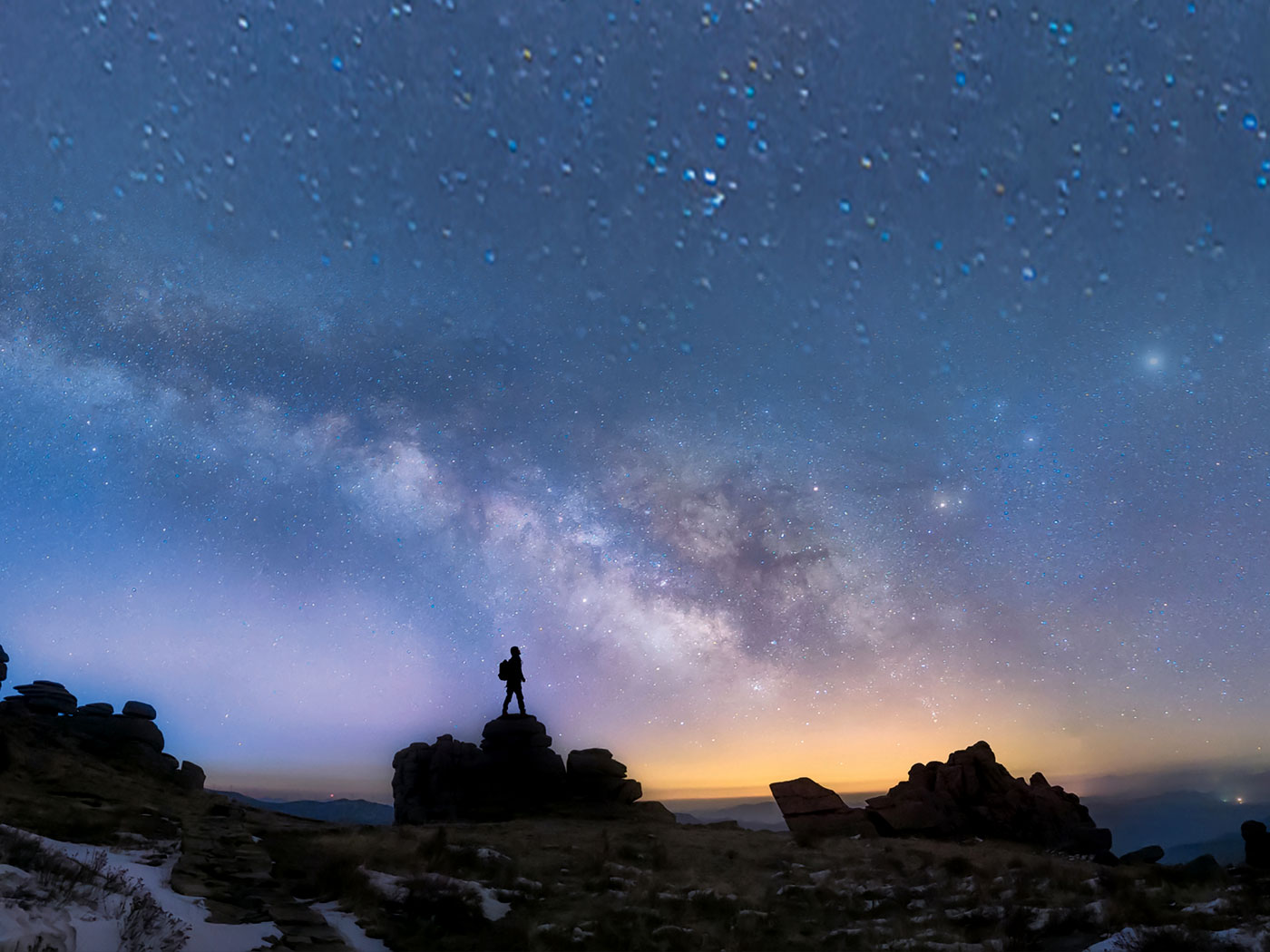Interpreting Stardust
By Dr. John Baumgardner
On January 15, 2006, a space capsule parachuted out of the sky and landed in the Utah desert. This capsule contained dust-sized particles snared from the comet named Wild 2 and possibly also a few grains of interstellar dust. The return of this capsule to earth was the culmination of the successful NASA Stardust mission to collect pristine material from a comet. The Stardust probe was launched almost six years ago in February 1999 and made a brief encounter with Wild 2 in January 2004, traveling a total of about three billion miles before it returned to earth. It came within 146 miles of the comet and captured thousands of tiny particles from the comet using a tennis racket shaped collector containing a wispy foam made of silica. After capture, these particles were locked away in a “clam shell” capsule to safeguard them on their trip back to earth. These comet samples are now to be distributed to several specialist research teams around the world for careful study and analysis.
Recent news stories make the claims that the samples obtained on this mission “contain the fundamental building block of our Solar System” and that “analysis may be able to determine not only the origins of the Solar System from these samples, but also possibly the origins of life” (http://www.pparc.ac.uk/Nw/stardust1.asp). How does one interpret such claims? It is really true that these comet particles represent the original building blocks of the solar system? Will studying them reveal how the solar system came into being and perhaps even how life arose?
First of all, it is important to realize that researchers have had samples of similar material for a long time in the form of meteorites that have landed on the earth of their own accord. Generally speaking, most scientists do not expect the basic composition of these comet particles to differ in any major ways from the meteorites that have been studied and analyzed for many years. One conclusion that has been drawn from these studies is that the estimated overall chemical composition of the earth (in terms of relative abundances of the various elements) is remarkably similar to the composition of the sun, as determined from the characteristics of its spectrum, and also remarkably similar to a certain class of stony meteorites known as carbonaceous chondrites. One of the first issues to be checked in the analysis of these comet particles is how closely their elemental composition matches these earlier results. It is expected that the match will be reasonably close. So what does this mean? It simply means that when God created the solar system, He fashioned it by using the same basic recipe of elements out of which He had already made the earth. Although Scripture does not go into this sort of detail, it is not surprising that God might have done it this way.
So how much information will the analysis of the comet particles provide as to the processes by which the solar system came into existence? Probably not much beyond what is already known, namely, that the various bodies comprising the solar system have remarkably similar elemental ratios, implying they were all made from the same basic chemical recipe. Just where this material came from in the first place and how it was processed to make the earth, the moon, the other planets and their moons, the sun, the asteroids and comets are secrets that these particles almost certainly cannot reveal. From Scripture we know that the process unfolded quickly, within the first four days of creation, and because of the short time scale, almost certainly had to involve processes beyond the pale of present day science.
What about the claim that the comet particles can give new insights about the origin of life? The main issue is what carbon-containing molecules might exist in this cometary material. Scientists have identified some 130 molecules in interstellar space by studying the spectral lines of emitted and absorbed light. In 2002, two scientists in Taiwan reported findings that suggest the presence of the simple amino acid glycine in interstellar gas clouds (http://www.newscientist.com/article.ns?i
But it is a staggering leap to go from a few amino acids (actually, just one, tentatively, so far) to any sort of living, self-reproducing system. In my opinion, to imply that such a thing is plausible from a scientific standpoint is scientific dishonesty. Claims like these should therefore be challenged. The complexity of living systems at the molecular level is so stupendous that the only rational conclusion is that they were supernaturally created by God —each of them, from bacteria to human beings. Christians should be wise and understanding, discerning the materialist belief system that underlies claims such as these.


















